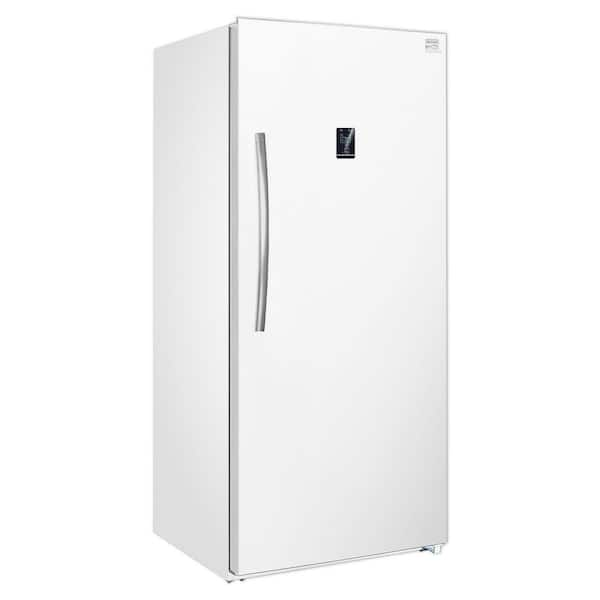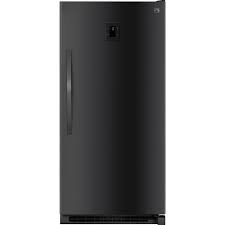When it comes to moving large appliances, there are several key considerations to keep in mind to ensure the safety of the appliance and the people moving it. Transporting a Kenmore freezer, or any large freezer, is no small task. At TheKitchenApplianceDad.com, we understand that the logistics of moving such a bulky item can be daunting. Here, we’ll guide you through the best practices for hauling a Kenmore freezer, including the often-asked question: Can you lay it down?
Preparing to Move Your Kenmore Freezer
Inspect and Prepare the Freezer
Before you even think about moving your freezer, it’s essential to prepare it properly. Start by unplugging the unit at least a few hours before the move to allow it to defrost. This prevents water damage and reduces the risk of injury from slipping on ice or water during the move.
- Empty the Contents: Remove all food items and store them in a cool place or another freezer.
- Secure Loose Parts: Any shelves, drawers, or ice trays should be removed or securely fastened to prevent shifting and damage.
- Clean and Dry: Wipe down the inside and outside of the freezer to remove any moisture. This step is crucial to prevent mold and odors.

Gather Moving Supplies
To move a Kenmore freezer safely, you’ll need the following supplies:
- A dolly or hand truck rated for heavy appliances
- Measuring tape
- Moving blankets or furniture pads
- Straps or ropes to secure the freezer
- Gloves and sturdy footwear for safety
The Right Way to Move a Freezer
Can You Lay a Kenore Freezer Down?
The orientation during transport is a critical aspect that many people get wrong. The general rule is to keep freezers upright during transportation. Laying a freezer on its side can cause the oil in the compressor to flow into the cooling lines, which can lead to cooling issues or even damage when the freezer is turned back on.
However, if you have no choice but to transport the freezer on its side due to space constraints, here’s how to do it more safely:
- Choose the Right Side: If laying down is unavoidable, lay the freezer on the side opposite the hinges, as this usually keeps the door securely closed.
- Minimize Time Spent Horizontal: Keep the time the freezer is laid down to a minimum. Once at your destination, keep the freezer upright for the same amount of time it was on its side before plugging it in.
Using a Dolly or Hand Truck
- Secure the Freezer: Wrap the freezer in moving blankets and secure it with straps to the dolly. Make sure it’s stable to avoid tipping.
- Tilt and Roll: Tilt the dolly back slowly and roll the freezer. Be sure to have someone help guide the dolly to prevent accidents.
- Navigating Stairs and Doors: Be extra cautious on stairs and through doorways. It’s helpful to have someone guide you from the front and back.
After the Move: Setting Up Your Freezer
Once you’ve moved your Kenmore freezer to its new location, follow these steps to set it up:
- Position Carefully: Place the freezer in its new spot. Ensure it’s level by adjusting the feet if necessary. Freezers need to be level to function correctly.
- Wait Before Plugging In: If you had to lay your freezer down at any point, wait at least the same duration it was laid down before turning it on. This allows the oil to return to the compressor.
- Check for Functionality: Once it’s been upright for the recommended time, plug the freezer back in. Monitor the temperature for the next 24 hours to ensure it’s working correctly.
Key Takeaways
- Preparation is Key: Properly defrost, clean, and secure your Kenmore freezer before moving.
- Keep It Upright: Whenever possible, transport your freezer in an upright position to avoid potential damage.
- Use the Right Equipment: Employ a sturdy dolly, moving blankets, and straps for a safe move.
- Post-Move Care: Allow your freezer to settle before plugging it in if it was transported horizontally.
By following these guidelines, you can ensure the safe transportation of your Kenmore freezer, preserving its longevity and functionality. Remember, when in doubt, keeping the appliance upright is always the safest bet. For more tips on handling kitchen appliances safely and effectively, keep visiting us at TheKitchenApplianceDad.com.


